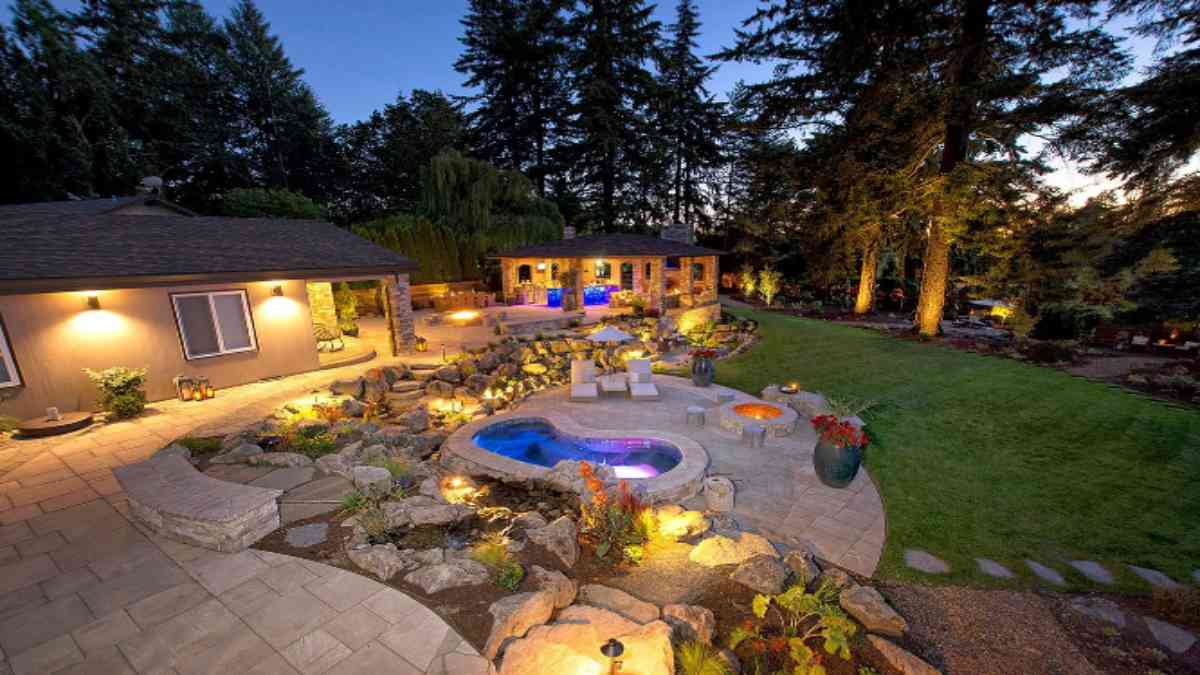Creating a backyard paradise is more than just planting a few flowers—it’s about crafting a space that reflects your style, meets your needs, and provides a sanctuary for relaxation and entertainment. Whether you’re a seasoned gardener or a DIY enthusiast, this guide will walk you through the essential steps to transform your outdoor space into a beautiful and functional haven.
Understanding Your Space
Before diving into design and planting, take a moment to assess your current backyard layout. Consider the following:
-
Size and Shape: Measure your space to understand its dimensions. This will help in planning the placement of various elements like seating areas, gardens, and pathways.
-
Sunlight Exposure: Observe how sunlight moves across your yard throughout the day. This will determine where to plant sun-loving or shade-tolerant plants.
-
Soil Quality: Test your soil to understand its pH and nutrient levels. This will guide your plant selection and any necessary soil amendments.
-
Existing Features: Identify any existing structures or features, such as trees, fences, or patios, that you want to incorporate into your design.
Designing Your Backyard Paradise
With a clear understanding of your space, it’s time to design your backyard paradise. Here are key elements to consider:
1. Define Functional Zones
Divide your backyard into distinct areas based on their intended use. Common zones include:
-
Entertainment Area: A space for outdoor dining, grilling, or hosting gatherings. Consider adding a patio, outdoor kitchen, or fire pit.
-
Relaxation Zone: A tranquil area for reading, napping, or enjoying nature. A hammock, lounge chairs, or a water feature can enhance this space.
-
Garden Area: Dedicate a section for planting flowers, vegetables, or herbs. Raised beds or vertical gardens can maximize space.
-
Play Area: If you have children or pets, include a safe and engaging area for play.
2. Choose a Design Style
Select a design style that complements your home’s architecture and your personal taste. Popular backyard styles include:
-
Modern: Clean lines, minimalist furniture, and neutral colors.
-
Cottage: Lush greenery, rustic furniture, and a mix of flowers and herbs.
-
Tropical: Exotic plants, vibrant colors, and natural materials.
-
Mediterranean: Terracotta pots, olive trees, and stone pathways.
3. Plan Pathways and Flow
Ensure easy movement between different zones by planning clear and inviting pathways. Use materials like gravel, stepping stones, or pavers to create defined routes.
4. Incorporate Lighting
Outdoor lighting extends the usability of your backyard into the evening hours. Consider:
-
Ambient Lighting: Soft lighting for general illumination, such as string lights or lanterns.
-
Task Lighting: Focused lighting for specific tasks, like cooking or reading.
-
Accent Lighting: Highlighting features like sculptures, plants, or architectural elements.
5. Select Appropriate Furniture
Choose furniture that suits your style and the climate of your area. Opt for weather-resistant materials like teak, aluminum, or synthetic wicker. Comfortable seating encourages relaxation and socializing.
6. Add Personal Touches
Incorporate elements that reflect your personality and interests. This could include:
-
Artistic Features: Sculptures, murals, or handmade decor.
-
Water Features: Fountains, ponds, or birdbaths for tranquility.
-
Textiles: Cushions, throws, or outdoor rugs for comfort and color.
Sustainable Practices for Your Backyard Paradise
Creating a backyard paradise doesn’t have to come at the expense of the environment. Implementing sustainable practices can enhance your space while being eco-friendly:
-
Native Plants: Choose plants that are native to your region. They require less water and maintenance and support local wildlife.
-
Rainwater Harvesting: Install rain barrels to collect runoff water for irrigation, reducing water waste.
-
Composting: Composting organic waste creates nutrient-rich soil for your garden and reduces landfill waste.
-
Solar Lighting: Use solar-powered lights to illuminate your backyard without increasing your energy bill.
Maintenance Tips for Longevity
To keep your backyard paradise thriving:
-
Regular Watering: Water plants early in the morning or late in the evening to minimize evaporation.
-
Pruning: Regularly trim dead or overgrown plants to promote healthy growth.
-
Soil Care: Amend soil with compost or organic matter to maintain fertility.
-
Pest Management: Use natural or organic methods to control pests and diseases.
Conclusion
Transforming your backyard into a paradise is a rewarding endeavor that enhances your home’s value and provides a personal retreat. By understanding your space, designing thoughtfully, incorporating sustainable practices, and maintaining your garden, you can create an outdoor oasis that brings joy and relaxation for years to come.
Frequently Asked Questions (FAQs)
1. How do I start designing my backyard?
Begin by assessing your space, defining functional zones, and selecting a design style that complements your home and personal taste.
2. What are some low-maintenance plants for my backyard?
Consider native and drought-tolerant plants, such as lavender, succulents, or ornamental grasses, which require less water and care.
3. How can I make my backyard more eco-friendly?
Implement practices like using native plants, harvesting rainwater, composting, and installing solar lighting to reduce your environmental impact.
4. What are some budget-friendly ways to enhance my backyard?
DIY projects like building raised garden beds, creating a fire pit, or using repurposed materials can add charm without breaking the bank.
5. How do I choose the right outdoor furniture?
Select furniture made from weather-resistant materials, ensuring comfort and durability. Consider your space’s size and the furniture’s functionality.
6. How can I extend the use of my backyard into the evening?
Incorporate outdoor lighting, such as string lights or lanterns, to create ambiance and allow for nighttime enjoyment.
